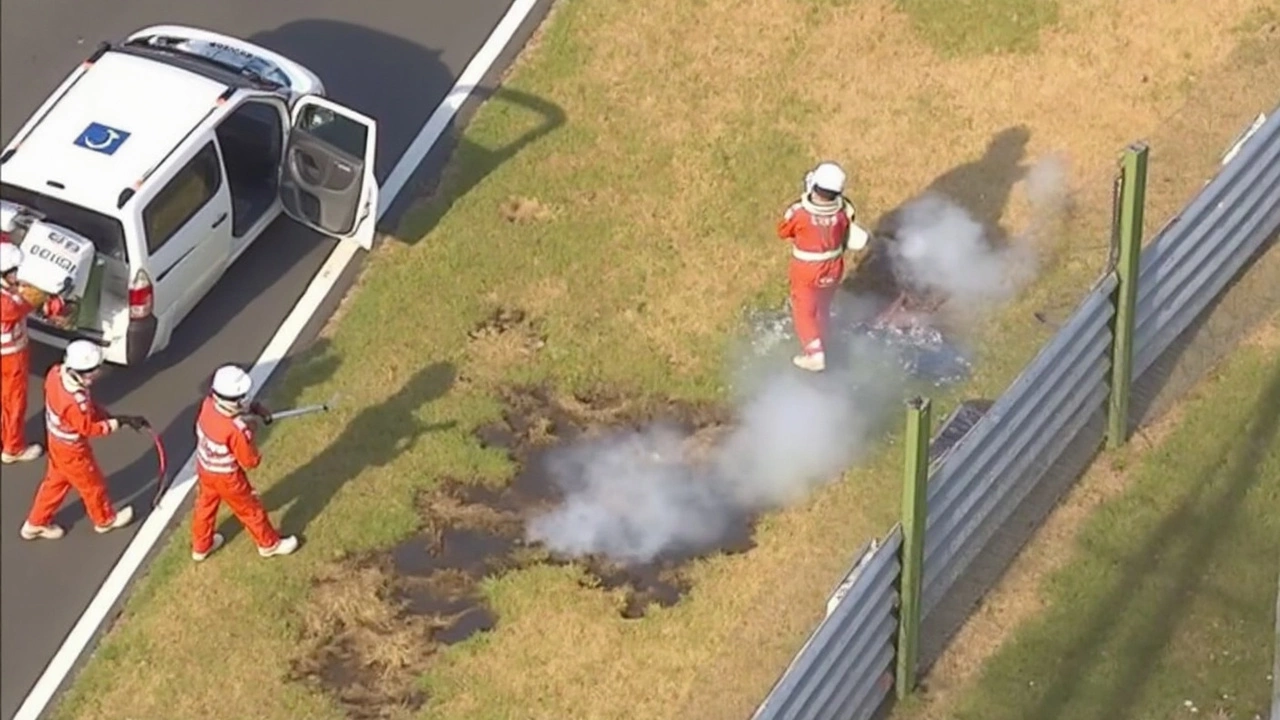Grass Fires – Quick Facts and Easy Safety Tips for Motorsports Fans
Grass fires can pop up out of nowhere, especially when a dry summer meets a spark from a grill or a faulty spark plug. If you’re heading to a race track, a car meet, or a festival, a sudden blaze can ruin the day and put people at risk. Knowing the basics helps you stay safe and keep the fun going.
How a Grass Fire Starts and Why It Matters at Events
Most grass fires start with three things: heat, fuel, and oxygen. A discarded cigarette, a hot engine, or even a camp‑fire that’s not fully out can ignite dry grass in minutes. At large motorsport events the crowd, food trucks, and car exhausts create extra heat sources, making it easier for a spark to catch.
When a fire spreads, it can block access roads, damage equipment, and force organizers to shut down the venue. That means you might miss the race, lose tickets, or get stuck in a dangerous crowd. Knowing the signs—smoke, a faint smell of burning, or a sudden rise in temperature—lets you act fast.
Practical Steps to Prevent and React to Grass Fires
Before you arrive, check the weather. High winds and low humidity boost fire risk. If the forecast calls for dry, windy conditions, consider arriving early to spot any wet‑down areas or fire‑break zones set up by the venue.
While you’re on site, keep a few habits in mind: never throw cigarettes on the ground, always extinguish grills completely, and stay clear of any low‑lying vegetation near food stalls. If you see a small spark, alert staff right away. Most event crews have fire extinguishers and know the quickest way to contain a blaze.
In the rare case a fire does flare up, stay low, move away from the smoke, and follow the venue’s evacuation routes. Look for signs that say “Fire Exit” or ask a staff member for the nearest safe spot. Don’t try to put out a large fire yourself—call the organizers or shout for emergency services.
After a fire, the area may be closed for cleanup. This can affect parking, restrooms, and even the race schedule. Patience helps; the crew will clear the grass and make sure everything’s safe before letting the crowd back in.
For organizers, a few extra steps can make a big difference. Setting up fire‑breaks—strips of cleared ground—around high‑traffic zones, having water trucks on standby, and training volunteers on fire safety all cut down the risk. Fans love the action, but safety always comes first.
Bottom line: grass fires are easy to start but also easy to prevent if you stay aware. Keep your trash in bins, watch where you light up, and listen to any safety announcements. With these simple habits, you’ll enjoy the race without worries about a sudden blaze.
Next time you head to a track or a car rally, remember the basics and you’ll help keep the event fun and fire‑free for everyone.
Japanese GP: FIA Acts Swiftly to Prevent Grass Fires at Suzuka
Posted by Daxton LeMans On 5 Apr, 2025 Comments (0)

The Japanese Grand Prix at Suzuka Circuit faces grass fire threats due to sparks from Formula 1 cars. FIA has taken preventive measures like grass cutting and deploying firefighting teams to tackle these issues. Dry weather may continue through the weekend, but rain is anticipated on race day, possibly reducing fire risks.




